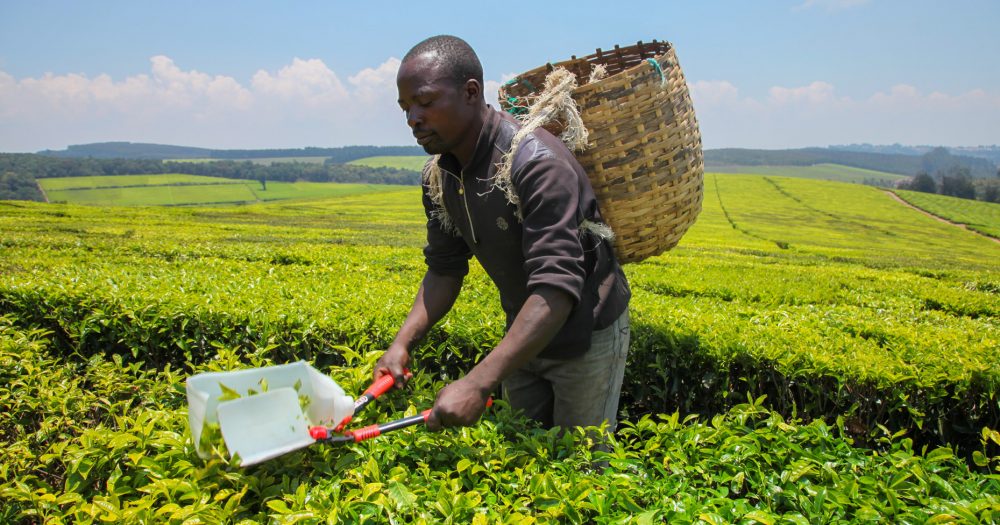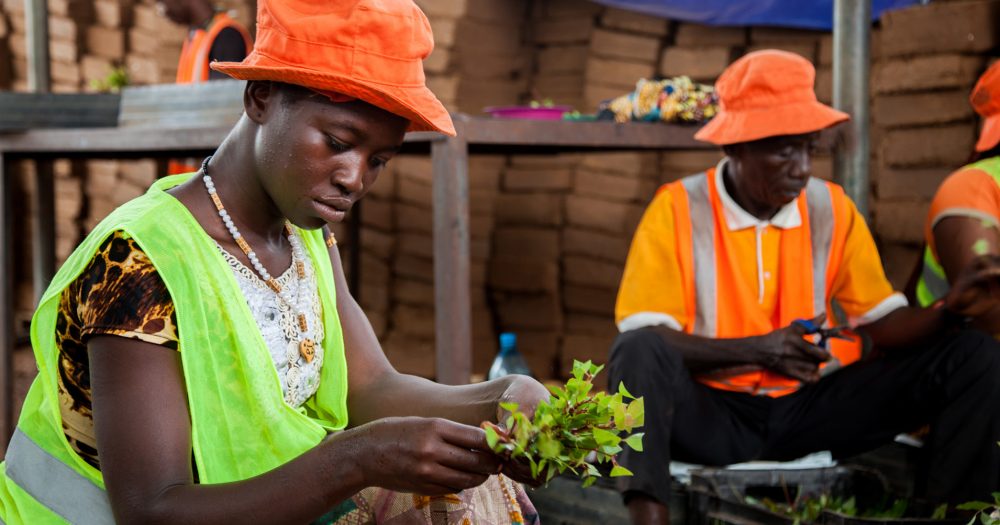This investment was made when British International Investment was named CDC Group.
Our investment
Description of the investment.
Description of the investment.
In 2021, we made a EUR 10 million long-term loan, as an anchor investor to Medical Credit Fund II. Other investors include Swedfund, FMO, Philips and the Dutch government.
Our investment will help improve access to essential healthcare for low-income patients across sub-Saharan Africa. By providing local currency loans to healthcare providers, MCF’s Fund II will enable over 2,500 healthcare SMEs to better serve an estimated 10 million patients by 2030.
Impact information
Applies to investments made from 2019 onwards. The tabs in this section define what we expect to achieve through the investment, assessing the potential impact of the investment against six dimensions of impact. You can find more details on our methodology of assessing impact here.
Applies to investments made from 2019 onwards. The tabs in this section define what we expect to achieve through the investment, assessing the potential impact of the investment against six dimensions of impact. You can find more details on our methodology of assessing impact here.
What?
| Impact |
|---|
Improve healthcare outcomes through access to quality essential healthcare services (SDG 3.8) and increase health financing and training of the health workforce in developing countries (SDG 3.c) |
|
|
How?
| Primary | Secondary |
|---|---|
|
Direct: Provide local currency loans (including via new, digital lending products) to healthcare providers and their suppliers to fund CAPEX (~80%) and working capital (~20%) needs and ultimately help scale up healthcare businesses’ ability to serve patients. |
N/A |
Who?
| Stakeholder | Geography | Characteristics |
|---|---|---|
| Customers (patients) |
Kenya (32%), Nigeria (22%), Ghana (20%), Tanzania (17%), Uganda (9%)1 . 85% urban and peri-urban/15% rural split between healthcare SMEs2 reached through Fund I with no significant changes to target borrowers expected under Fund II. |
57% of MCF clinic patients are reported to be from low- to very-low income groups (Catalyst portfolio benchmark: 55% low-income reached). Current reach by gender: 48% female, 25% male, 27% children (Catalyst portfolio benchmark: 44% women reached). Approximately 20% of MCF’s borrowers are women-owned businesses. |
How much?
| Scale | Depth/Duration |
|---|---|
|
A minimum of 10 million patients are expected to be reached through 2500 MCF clinics cumulatively by 2030 (up from 1700 clinics today). MCF reaches an average of 700 patients/month/clinic. The cumulative reach of MCF is the largest reach across CDC’s Catalyst fund portfolio. |
While 80% of clinics taking up loans from MCF show improvements in SafeCare ratings (quality of care indicator), similar results were found in clinics receiving only TA but no loans from MCF3 , making the link between loans and improved quality of care difficult to establish. |
Contribution/additionality
| Contribution/additionality |
|---|
|
Grid score
| Grid Score
To help us direct our investments, we previously used a tool called the Development Impact Grid. It scored investments out of four, based on two factors: the difficulty of investing in a country and the propensity of the sector to generate employment. This tool was used for investments until the end of 2021. Since 2022 it has been replaced by the Impact Score. |
|---|
|
n/a |
Risk
Execution RiskExecution (High): Failure to grow loan book at the scale and pace needed to reach financial sustainability. Elements of MCF’s new strategy (e.g. digital loans & direct lending) are untested at scale. Implementing digital loans requires that patients use mobile money to pay, which is less prevalent ex Kenya. Risk is correlated with commercial risk; mitigated to some extent by backing experienced GP Evidence (High): Risk relates to lack of insufficient evidence linking increased access to credit financing at the clinic level to improved quality of care at the patient level. We will seek to further explore how to measure this impact over the lifetime of investment with MCF. Further risk linked to MCF’s diversification strategy, which means that visibility on patients reached for some loan types (e.g. equipment manufacturers) will be weaker; this risk must be tolerated. Execution (Medium): Quality improvement risk; regulatory oversight is limited, patients have difficulty assessing quality, and (insurance) payments are not related to quality. Mitigation linked to loan strategy and TA bundling |
Reporting and Complaints Mechanism
The Reporting and Complaints Mechanism allows anyone outside BII to report alleged breaches of the business integrity or environmental and social provisions of BII’s Policy on Responsible Investing. This includes breaches made by BII, a BII investee, or a portfolio company of a fund in which BII has invested. The Reporting and Complaints Mechanism Rules are available here. Reports and complaints can be submitted by email to reportsandcomplaints@bii.co.uk or by mail. See more details on our Reporting and Complaints Mechanism here.
For any other general enquiries contact us at enquiries@bii.co.uk
-
Key facts
- Last updated
:
When the last quarterly update of the website database occurred.
- December 2024
- Project number
:
An identifier number shared by investments in the same project.
- D4764
- Status
:
The current status of the investment (green flag for active and red flag for exited).
- Active
- Region
:
The geographical region where the country is located. We currently invest in Africa, South Asia, South East Asia and the Caribbean. In 2023, BII’s investment mandate was extended allowing it to invest in regional funds linked to Ukraine, with the majority of activity expected to begin post-war. Investments outside these regions were made prior to 2012 under previous investment mandates.
- Africa
- Country
:
The countries where the investment delivers impact. Where impact is delivered in multiple countries, this is indicated.
- Africa
- Sector
:
We prioritise those sectors that facilitate development and need our capital the most. Our priority sectors contribute towards many of the Sustainable Development Goals. They range from investing in the power infrastructure that will provide people with better access to electricity, to investing in financial institutions that direct capital to the individuals and businesses that need it the most.
- Health
- Sub sector
:
The sub-sector that the investment is made into; this provides a more granular level of detail than the ‘sector’ information
- Health Care Providers & Services
- Investment type :
- Debt
- Start date :
- December 2021
- Amount :
- $11.34m
- Currency of investment :
- EUR
- Domicile
:
The company or investment fund’s place of incorporation.
- Netherlands
We provide capital in the following ways: directly – through direct equity, direct debt, guarantees and other non-intermediated financial instruments; and indirectly – principally through investment funds.
For direct investments and fund investments, this is the date BII committed capital to the investments. This is typically the date on which legal agreements are signed by all parties.
For the portfolio companies of our fund investments, this is the date (either the month or the quarter) on which the fund committed capital to the portfolio company.
For direct equity investments, this is the date at which British International Investment exited the investment.
For debt investments, this is the date at which the final debt repayment was made.
For funds, this is the date at which the fund was terminated.
For underlying fund investments, this is the date at which the fund manager exited the investment.
The total amount committed, per financial instrument, per investment, on the date BII becomes subject to a binding legal obligation to provide funding or assume a contingent liability. This information is provided in US dollars.
For direct investments, this is the amount that BII has committed to the business or project. For fund investments, this is the amount BII has committed to the fund.
The currency in which the investment was made.
- 2X Gender Finance
:
Indicates whether the investment is ‘2X qualified’ using the 2X Challenge criteria. You can find out more here. It only applies to investments made from 2018 onwards, when the 2X Challenge was first launched.
- Fully qualified
- Last updated


